As a very young child I can remember my cousin, who was 2 years older than me, having a toy ‘stuffed’ koala. It was gorgeous. Big enough and made well enough to pretend it was real, and of course an exotic creature that we could never see in the UK. Its fur was softer than any of our other toys. Looking back, it was no doubt rabbit fur, which strikes me as a little (or a lot) sad now, but at the time this was the ‘Rolls Royce’ of cuddly toys. I think she called it Billy; probably something to do with Australian billy tea.
The fact that this toy was part of our family meant that from a very young age, I was interested in the idea of seeing a real live koala. Just take a look at the images; what young child wouldn’t want to see and hold one? The next steps are to see one on TV, followed by spotting one at a zoo; exciting stuff, but for me the real excitement is always seeing wildlife in its natural habitat. In fact, if I do not see a creature in the wild, I don’t consider that I have actually seen it all. Australia though, seemed impossibly far away.
Many years later and I found myself working for an Australian company and my job enabled me to make a visit to Australia, and it was during this short trip a few years ago that I saw my first wild koala, whilst on the cliff walk at Noosa Head, in Queensland. I’m not sure how it caught my eye, but there it was, high up, sleeping in the fork of a eucalyptus tree, a dark shape against a bright sun. I took a pretty poor photograph or two with my old 35 mm camera, but came away delighted having seen a wild koala, even if it was sound asleep.
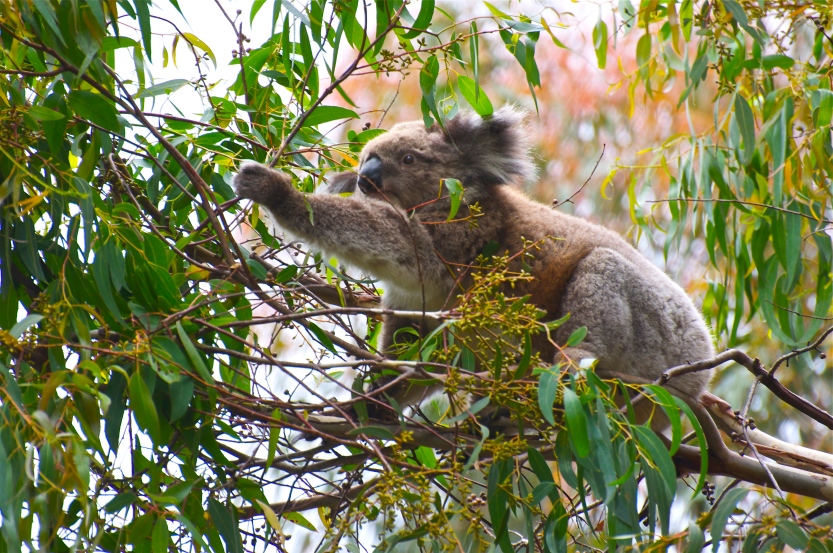
Fast forward a few years and I am presented with an opportunity to live and work in Sydney, Australia for a few years. I had been living there for around 18 months and had enjoyed seeing a lot of wildlife, but I had still not seen another koala. That is until we booked a Christmas get away to South Australia. The photographs in this post were taken at Flinders Chase National Park on Kangaroo Island, South Australia where we spent a week enjoying Australia’s magnificent natural world.
It was a heavy, grey, overcast morning when I followed the track from the National Park Visitor Centre to a group of ponds, where I spent some time standing silently, waiting in hope that a platypus would surface. Anyone who has looked for platypus knows that this is an activity that more often than not, ends in disappointment; this platypus hunt was no different. Feeling a little dejected, I walked back down the track to the car park.
We were a couple of days in to the holiday and I had seen some wildlife, but I hadn’t been able to get the good photo opportunities that I had hoped for. Completing the track hike, I arrived back at the empty car park, when I saw it; there, in a eucalyptus tree, right above my car, was a beautiful adult koala slowly chewing on a mouth full of gum leaves.
The camera was still ready from the platypus search, and after a period of time, snapping photos through the foliage, something else moving in the high branches caught my eye. I lowered the camera and looked up, to see a young koala making its way down the tree trunk and back to mum. I stayed watching and photographing these peaceful and unbelievably cute creatures until finally a burst of rain brought the wonderful experience to an end.
Whilst often referred to as a koala bear, it is in fact not a bear at all but a marsupial (meaning it has a pouch, in which it carries its jelly bean sized young) most closely related to the wombat. It is an expert climber, helped by having two thumbs on the front paws and long sharp claws.

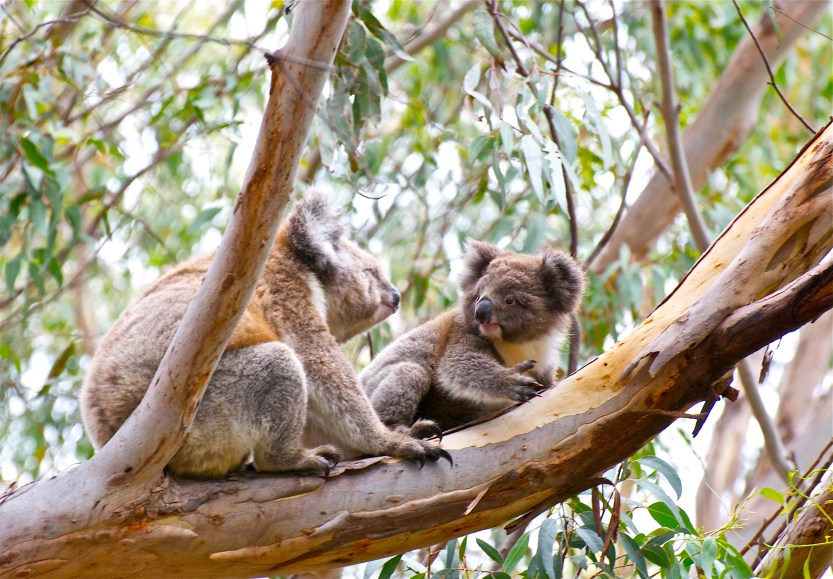
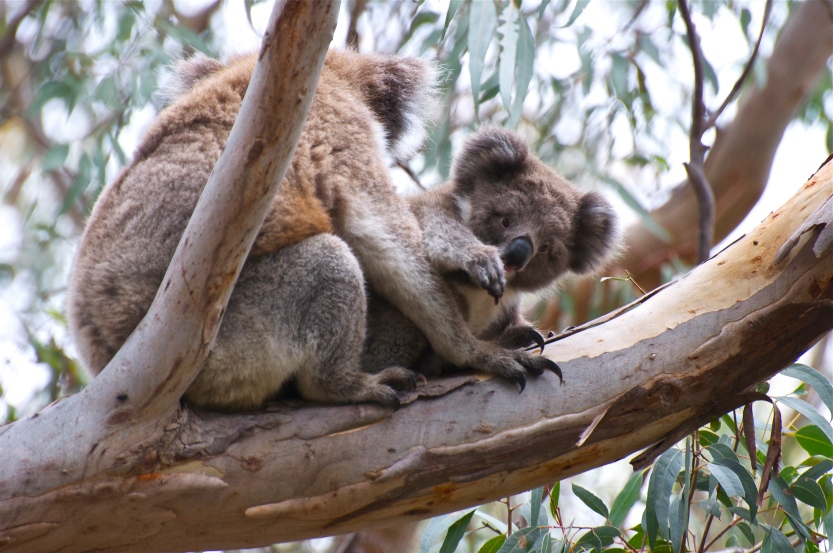
A food stop on the drive to Seal Bay presented another opportunity to see a young koala, living in a tree in the cafe garden. This time the cafe visitor was sleeping through the heat of the midday sun, while digesting a eucalyptus lunch.
It is thought that the name koala originates from the word gula, from the now forgotten Dharuk language; the language of the first indigenous Australians encountered in the New South Wales area. The koala is a highly respected animal in Aboriginal culture, where stories tell of the connection between the koala and availability of fresh drinking water in this often parched land.
In stark contrast to the respect offered by the indigenous Australians, during the 1920s and 30s the koala was hunted to the point of near extinction for the European fur trade. Thanks to large scale protests and a commitment by conservationists to restore the population, numbers have bounced back. The greatest threats now are cars, dogs and of course, the major threat of habitat destruction. As with so much of the endangered wildlife on our planet, the koala is protected by law but its habitat and food source is not. If we are to see genuine success in stabilising and restoring wild animal populations then large-scale habitat protection is essential.
The situation on Kangaroo Island is a little different, where the introduced population is growing to unsustainable levels. An adult koala requires around 100 eucalyptus trees and up to 1 kilo (2.2 lbs.) of leaves each night in order to thrive. The Kangaroo Island populations is under strict management, which has included trans-location to other parts of South Australia, sterilisation as well as a focus on habitat restoration.
There are many places is Eastern and southern Australia that afford a keen wildlife enthusiasts the opportunity to see these wonderful animals in the wild. But if you get the chance, I recommend Kangaroo Island as a good place to start. While there you will have the chance to see an abundance of Australia’s iconic wildlife and maybe even enjoy some of the fantastic local produce, such as sheep cheese, honey and wild berry jams. If that is not enough to temp you, then maybe the stunning, deserted beaches and boutique vineyards might help you to connect with the island’s wildlife.
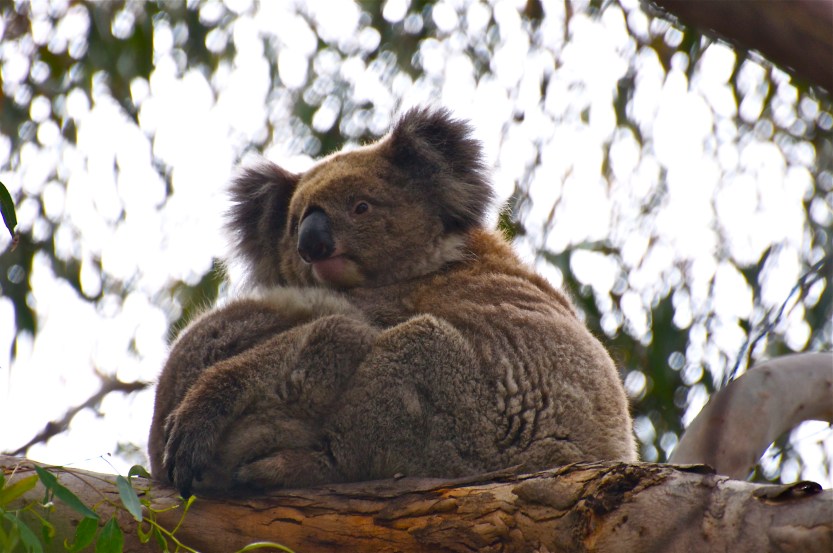
If you enjoyed this post, please follow Incidental Naturalist.
Comments and shares are welcomed.
Categories: Australia
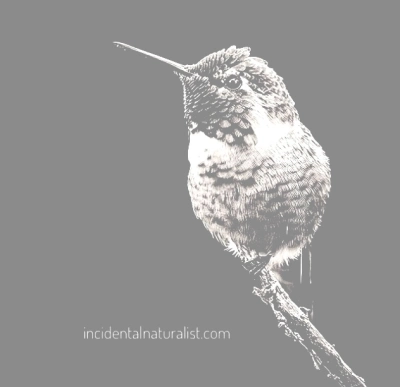


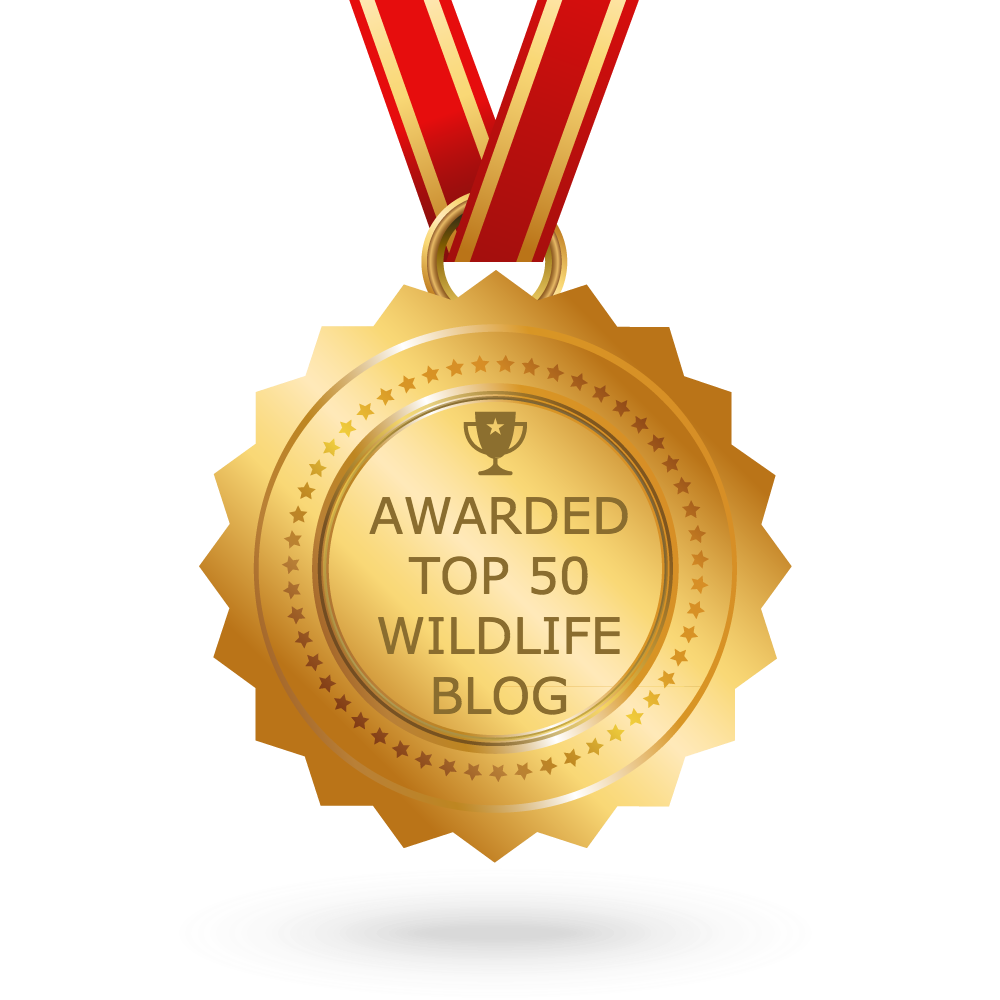

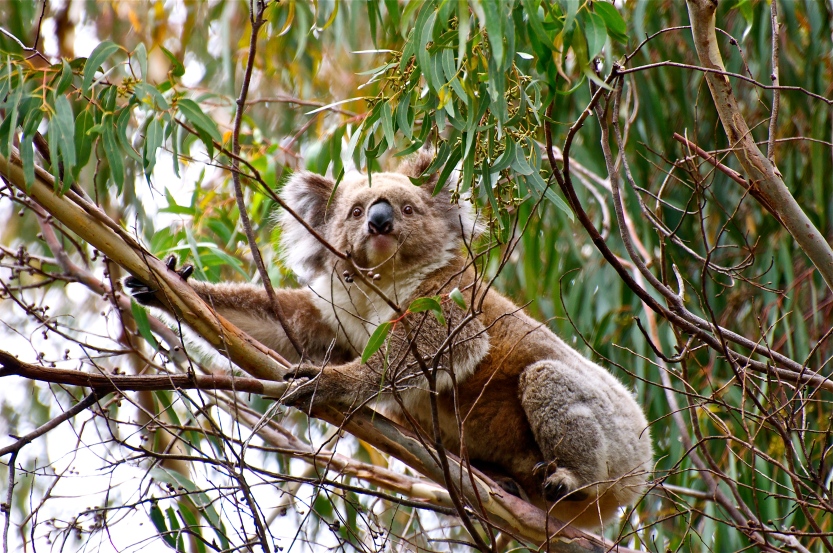
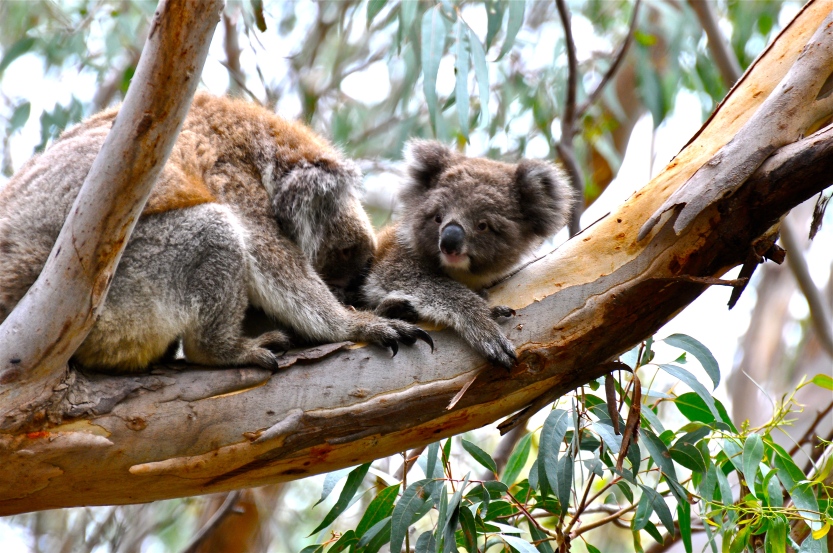
I haven’t seen Cassowary, but I’ve seen Koala 😀
Have you seen Short-beaked echidna. I was so lucky to see it.
LikeLiked by 1 person
I have, yes, usually crossing or running alongside the road. I regret not being able to get a reasonable photograph of one, though!
LikeLike
cute with sharp nails.
LikeLike
Love your blog, your photography and this post! It’s truly inspiring to be able to see animals where they belong in their natural habitat. And it’s really interesting to see how our attitude towards these animals have changed through history.
LikeLiked by 1 person
Thanks for the kind words! Lets hope that we can continue to be a part of changing peoples attitude towards nature and habitat.
LikeLike
Once again, thank you for sharing your wonderful experiences with us. Like you said, habitat destruction is a huge problem around the world. How do we preserve natural habitats while providing for the earth’s growing human population? There must be a way.
LikeLike
Thanks Josh! It is a complex issue, but I’m sure it helps to connect people to natural habitats, create industry that helps put food on the table of rural communities and perhaps make rural and environmental jobs pay local families a respectable wage. Huge challenges, huge tests of humanity.
LikeLiked by 2 people
Cuteness overload! I had a stuffy Koala when I was a little girl…wonder what happen to him?! Seriously though, Seeing them through your lens in their space all the better…
LikeLiked by 1 person
Aww I loved this post. Interesting read, beautiful photos. I’m off to Australia later on in the year but sadly no time for Kangaroo Island.
LikeLiked by 1 person
Thanks for the kind comment QLP! Where are you heading in Aus? There will be plenty of chances to see wildlife there.
LikeLike
A few different places – bit of a whirlwind visit – but one thing we are planning on doing is seeing the quokkas on Rottnest Island. Have you been there?
LikeLike
Gorgeous photos David, love the mother & joey pix.
LikeLiked by 1 person
I’m so glad you were able to see koalas in the wild and take such beautiful images of them. I have only seen two koalas in the wild during my whole life spent in Australia! 🙂
LikeLiked by 1 person
You have some nice koala pictures David. I don’t believe they are cuddly close up though. The echidna seems like the equivalent of Canada’s porcupine which I’ve been seeing much of lately “sleeping” on the side of the road unfortunately among other poor creatures. Roads and animals don’t mix generally. I rarely see this wildlife otherwise though.
LikeLiked by 1 person
I am so happy I found your blog…beautiful…educative…wonderful photos….and nice ways to change people habits and thoughts….
In my way, trying to do the same by sharing slow cosmetic recipes, all natural, vegetal…safe for environment, flora and fauna ( and I am considering human as fauna…)
I will be glad to read your coming posts
France
LikeLiked by 2 people
I love the blog, still don’t know how you made this blog so… MARVELOUS!
I also have a blog but it’s about anything I think about. And it’s not nearly as good as yours.
A PERSON
LikeLiked by 2 people
I have a new blog post I wonder if you’d be interested in; I’m looking for artists, writers, photographers and more to feature in my blog to write about what they feel are key issues in conservation, focus species etc. Would you be interested in contributing?
https://cjwaterfieldart.wordpress.com/2015/10/28/the-conservation-conversation/
LikeLiked by 1 person
H Chloe, Thanks for the comment. I really like your site and love your art. It seems that I am not alone in that. Congrats on your exhibitions! I may be interested in guest posting in future but I am not ready to do so yet as I am still young in my blogging life. I will certainly be following your work, though and am happy to get involved is there is something specific I can help with. David
LikeLike